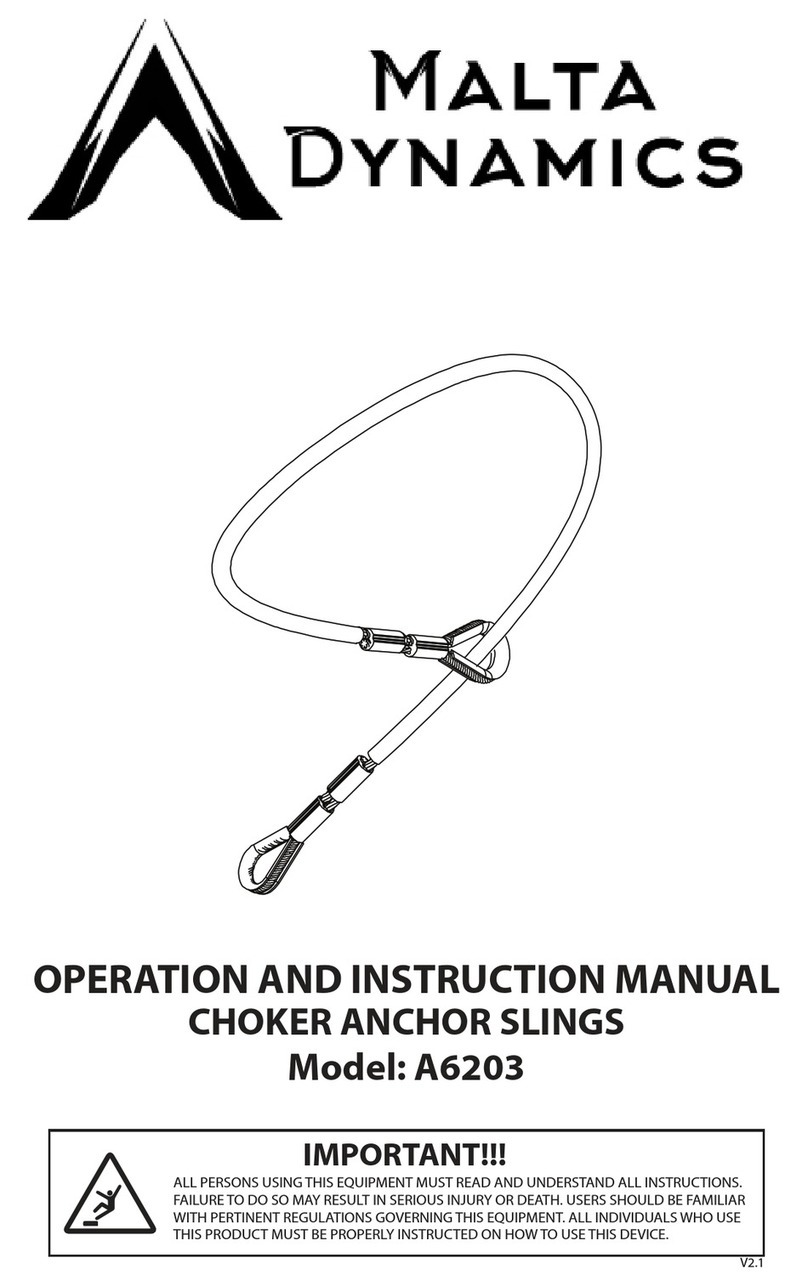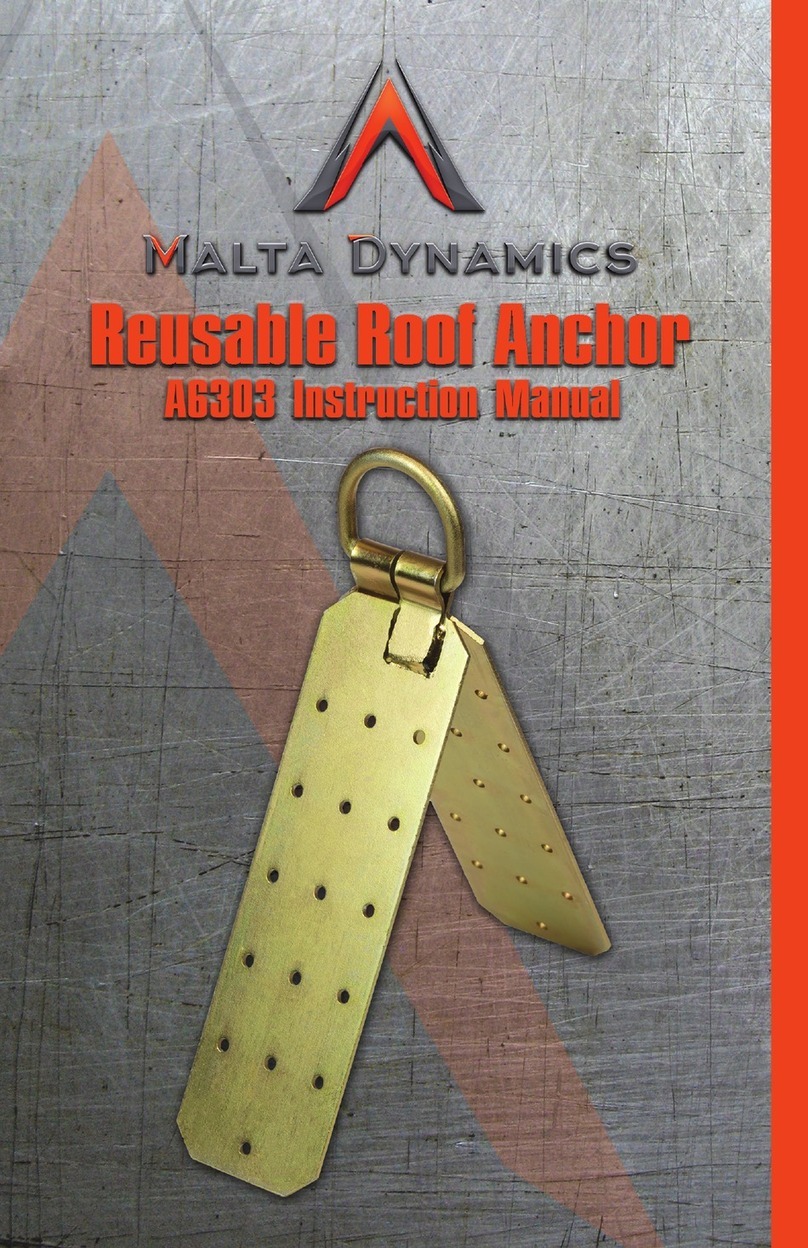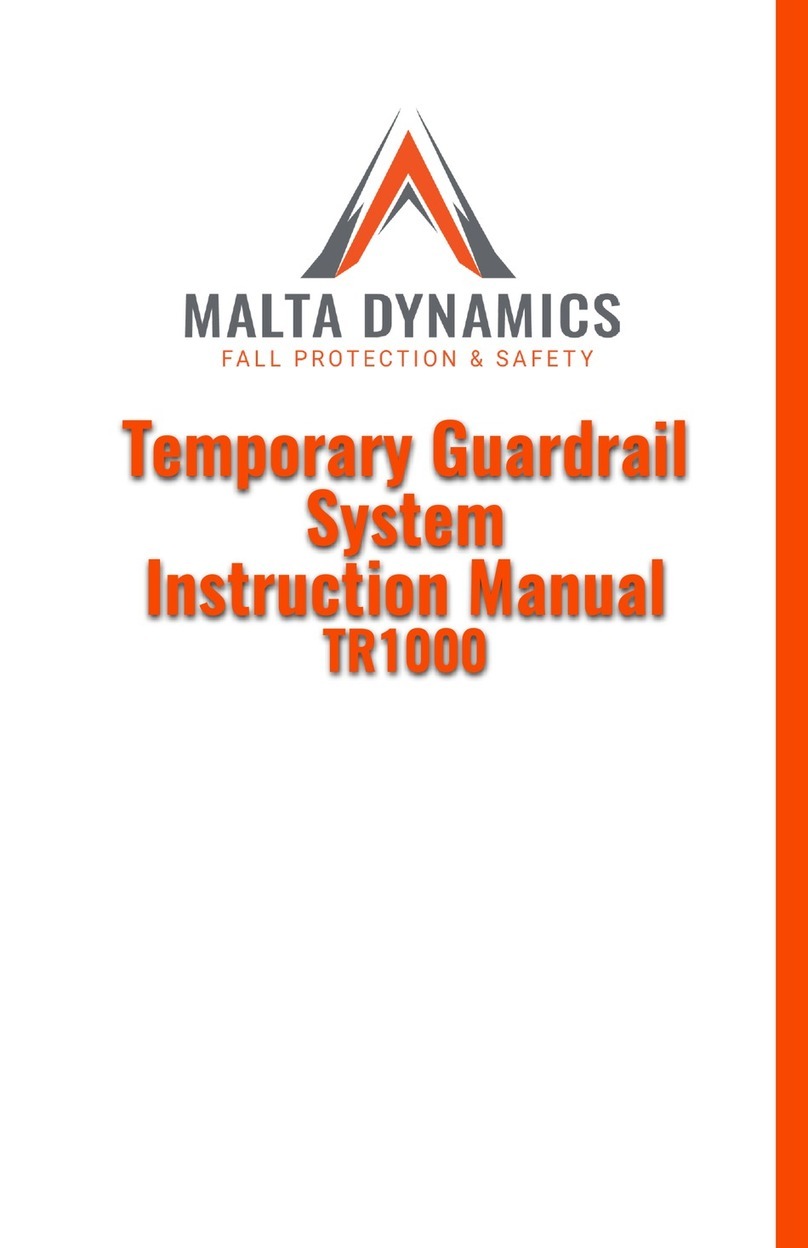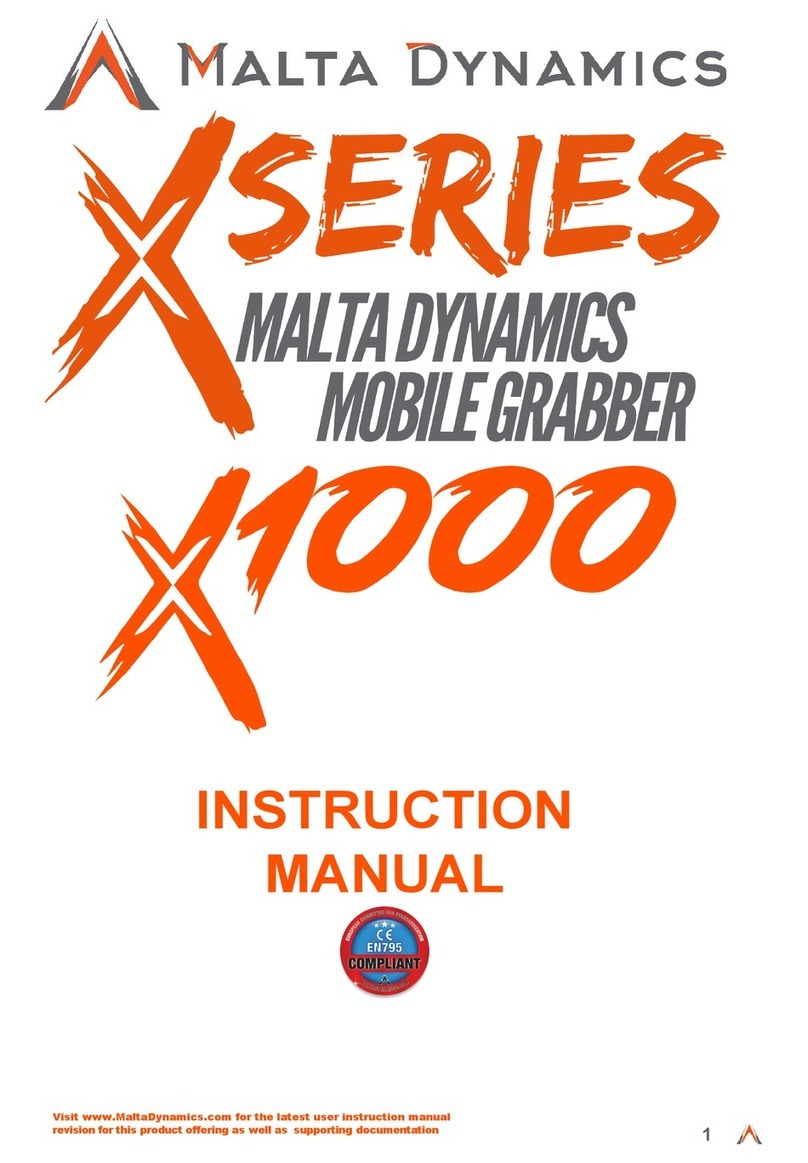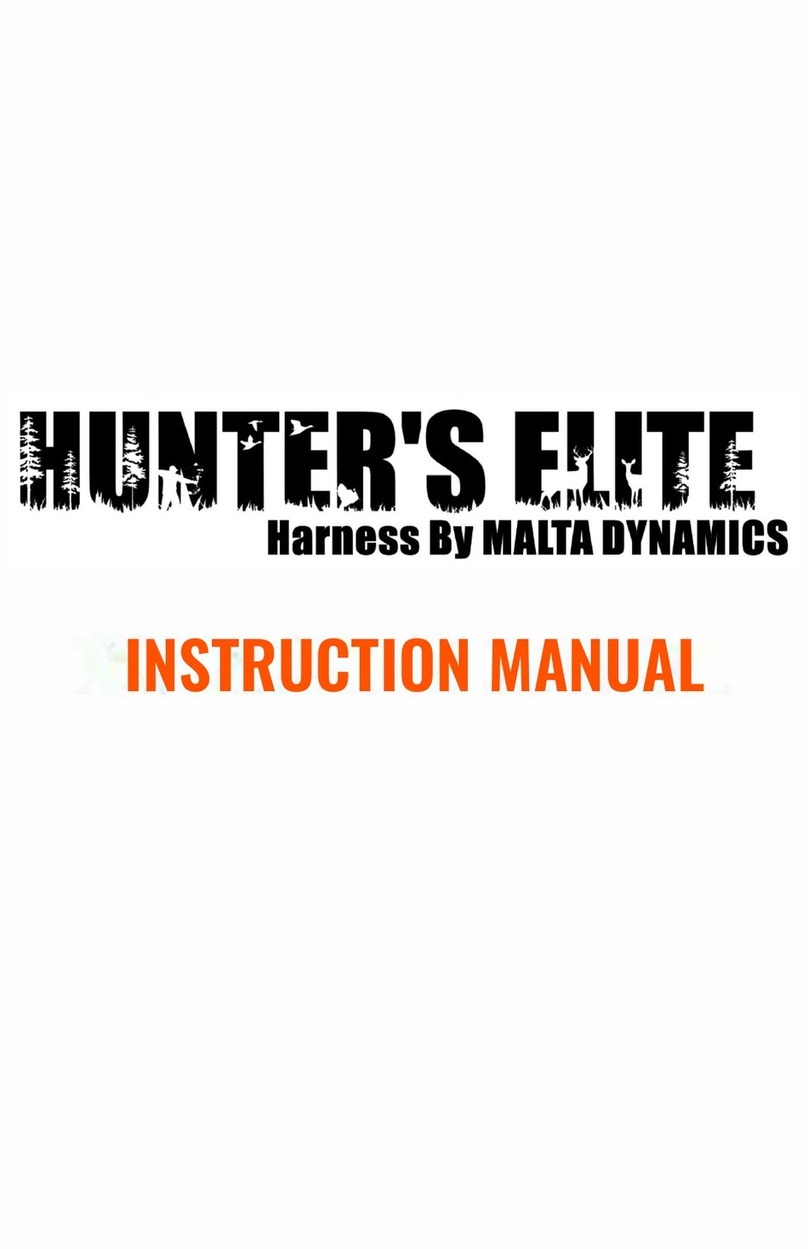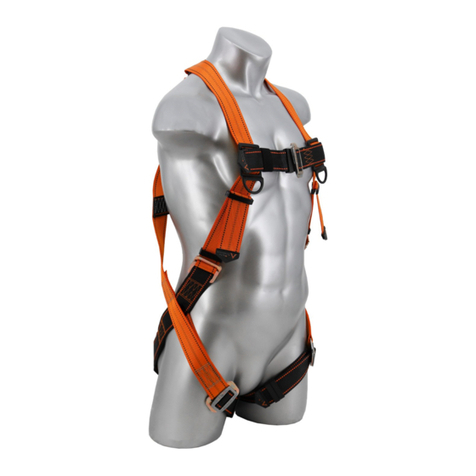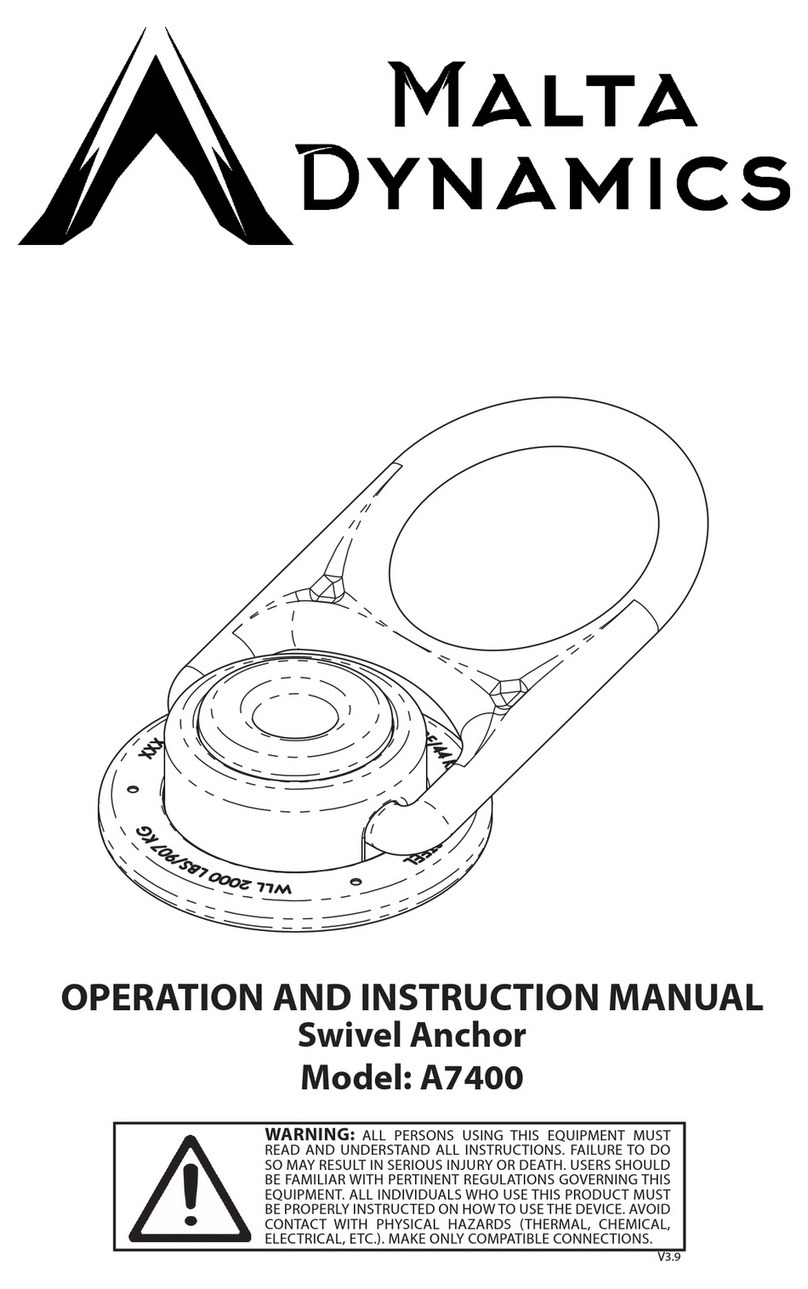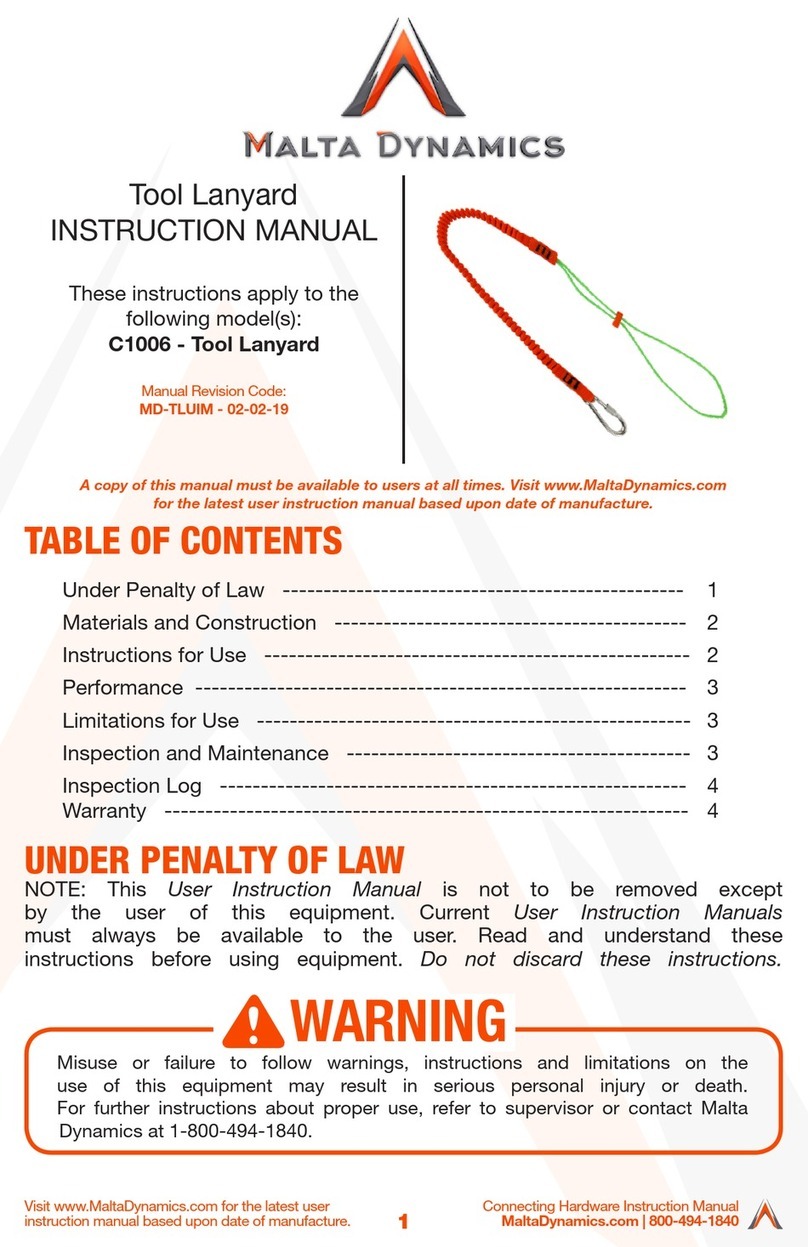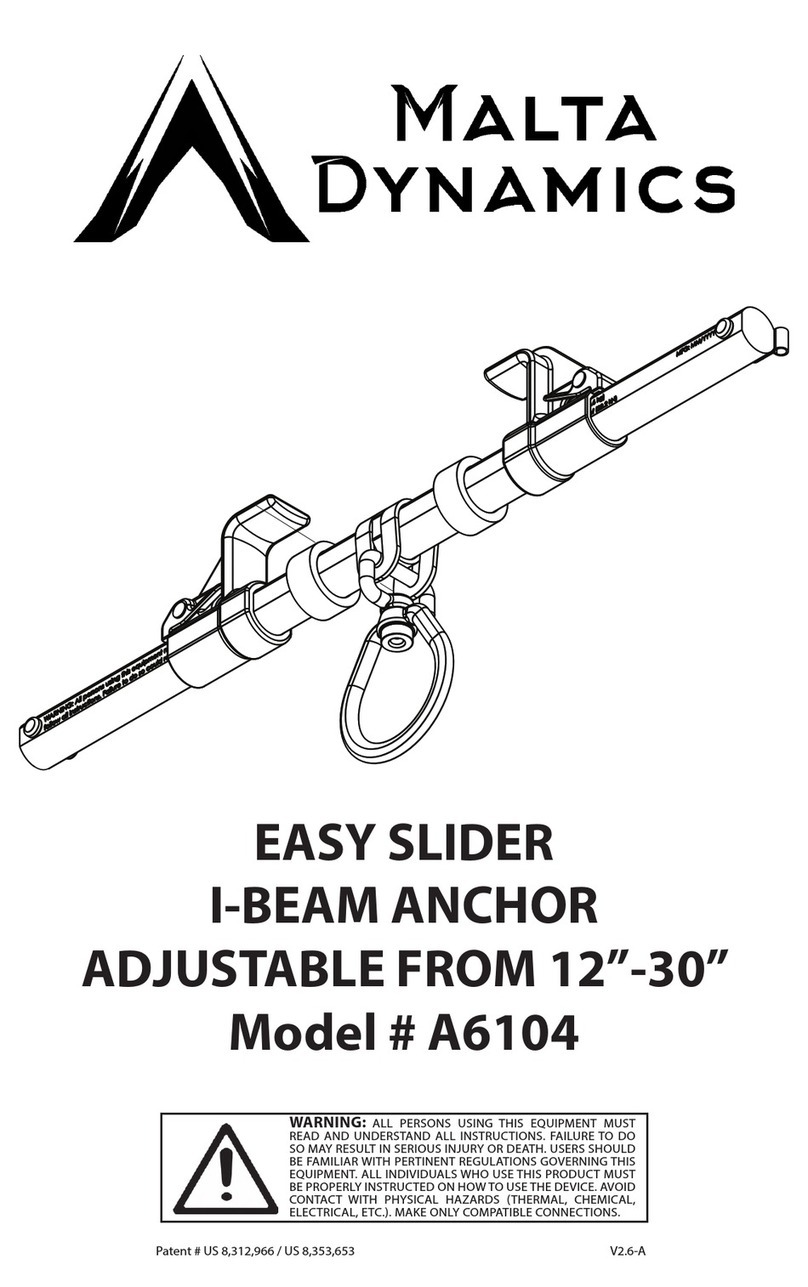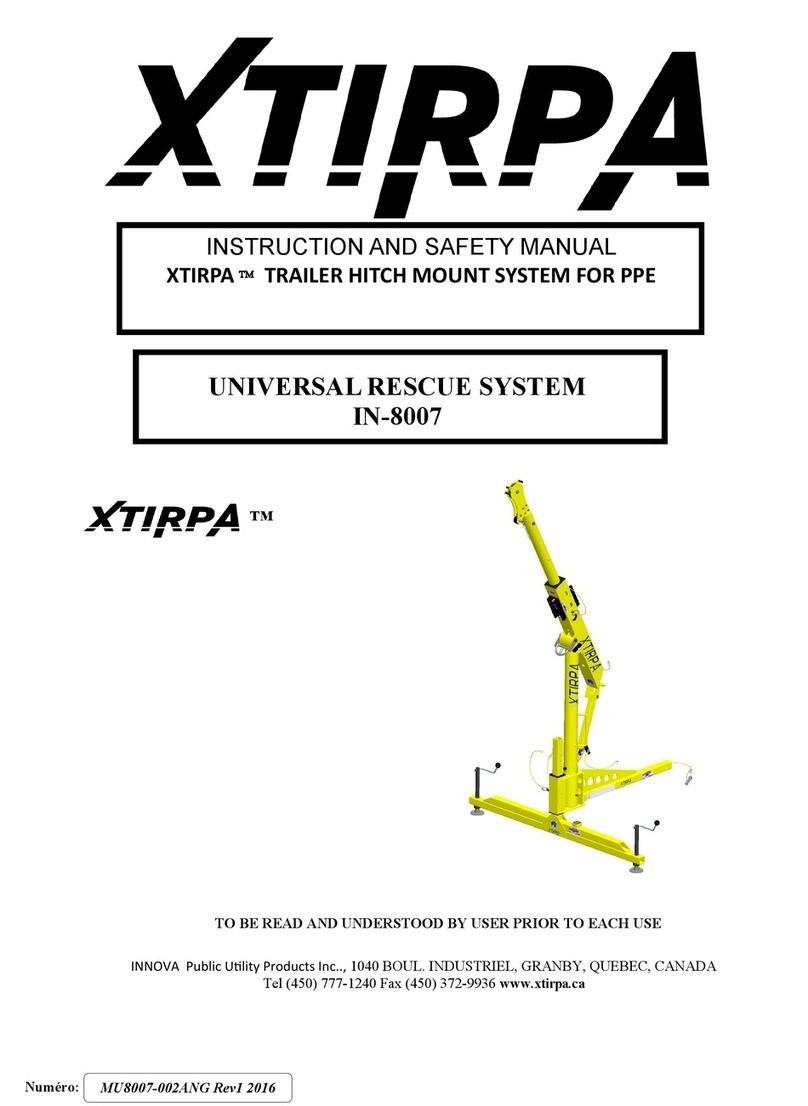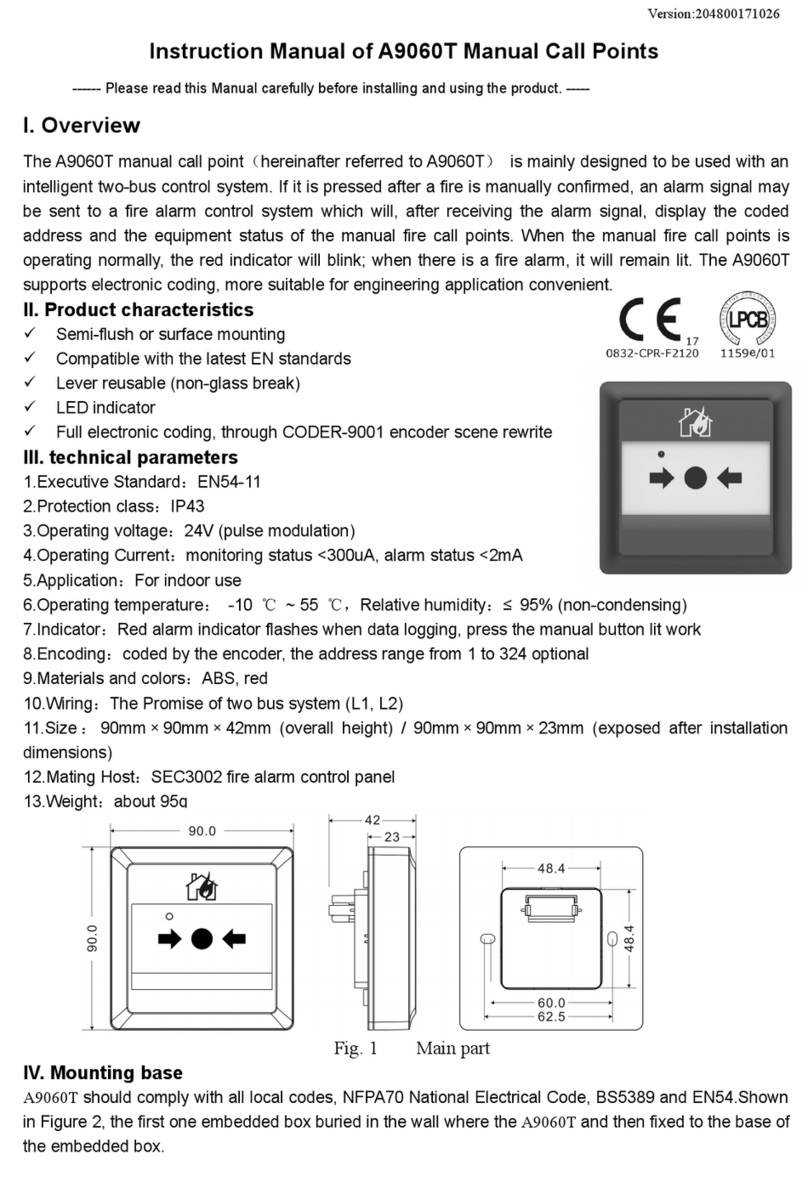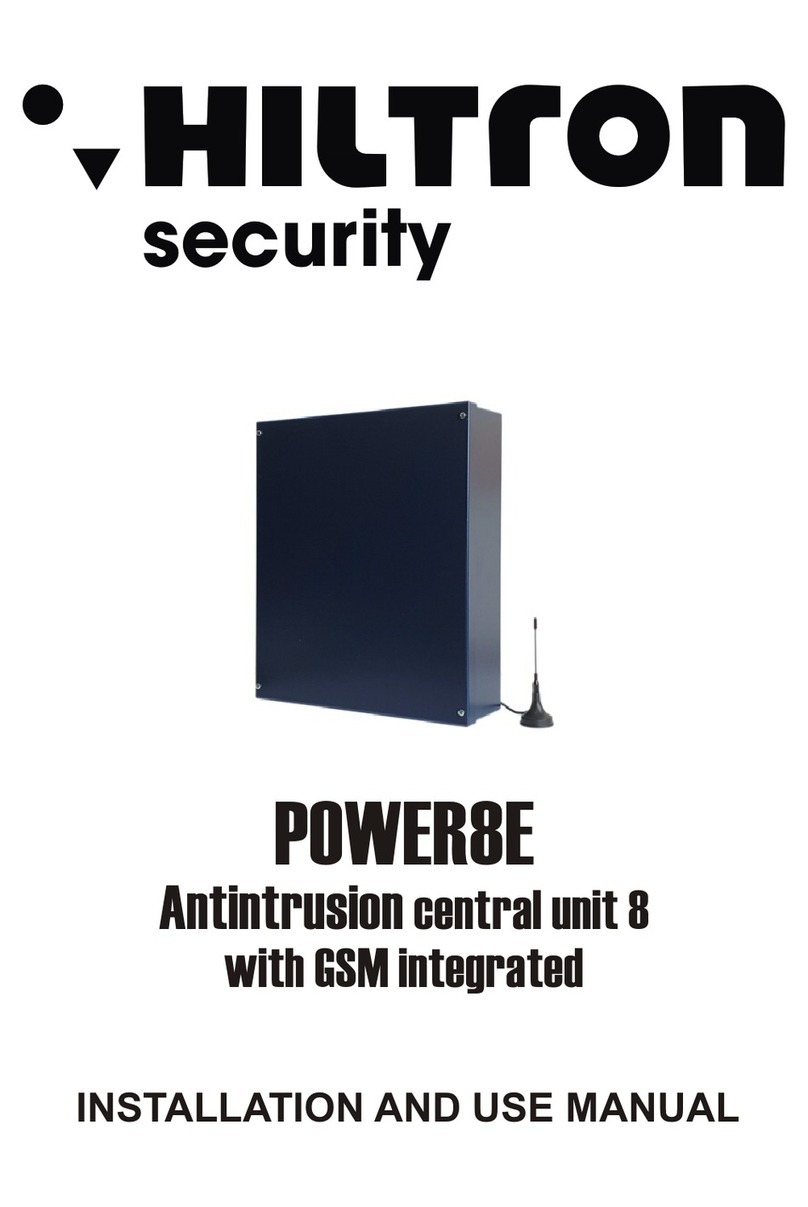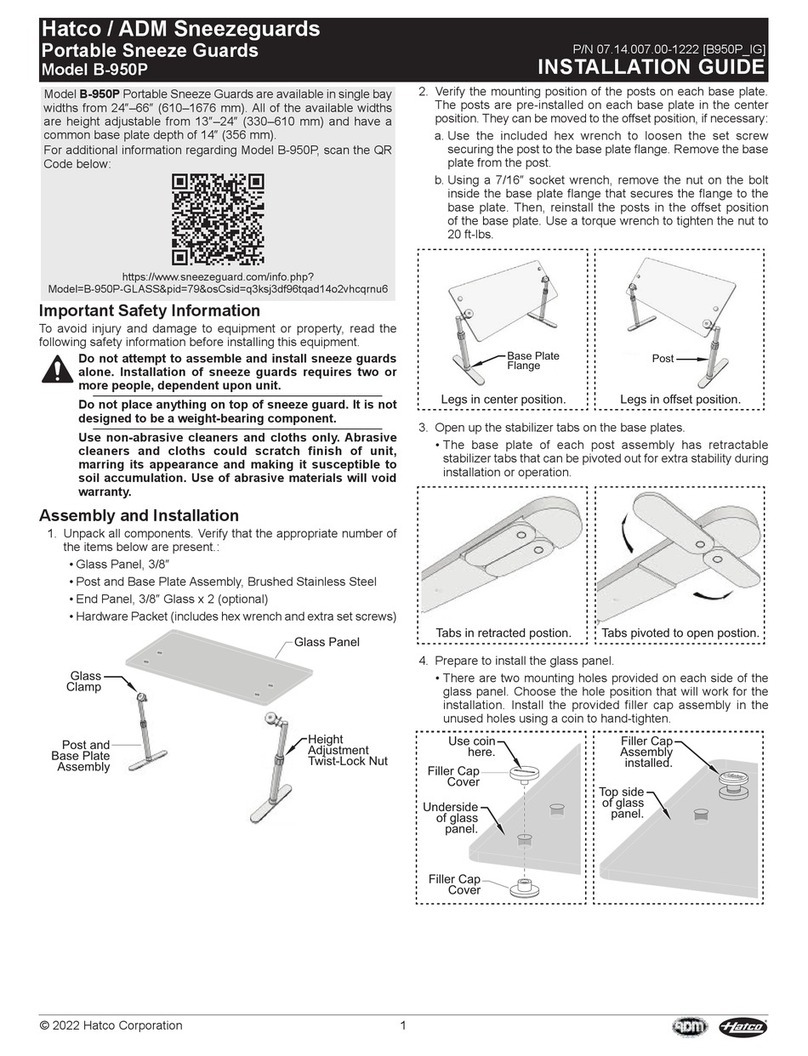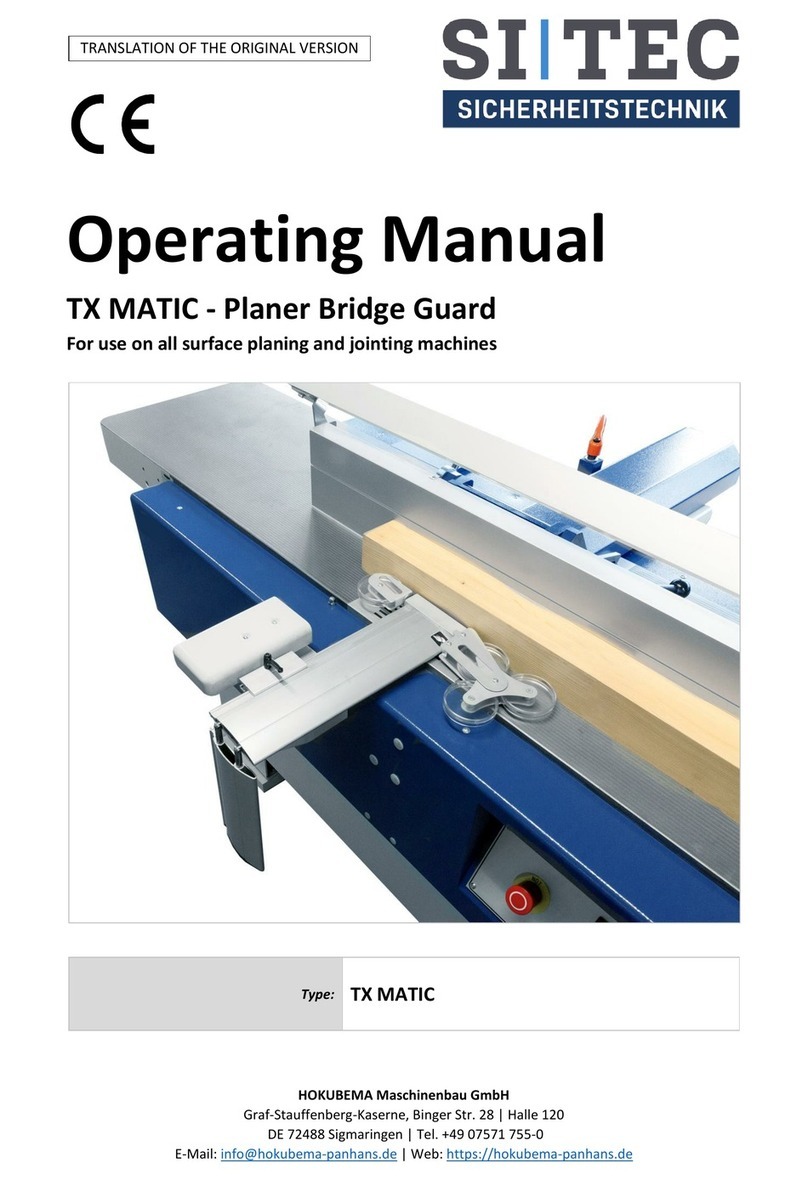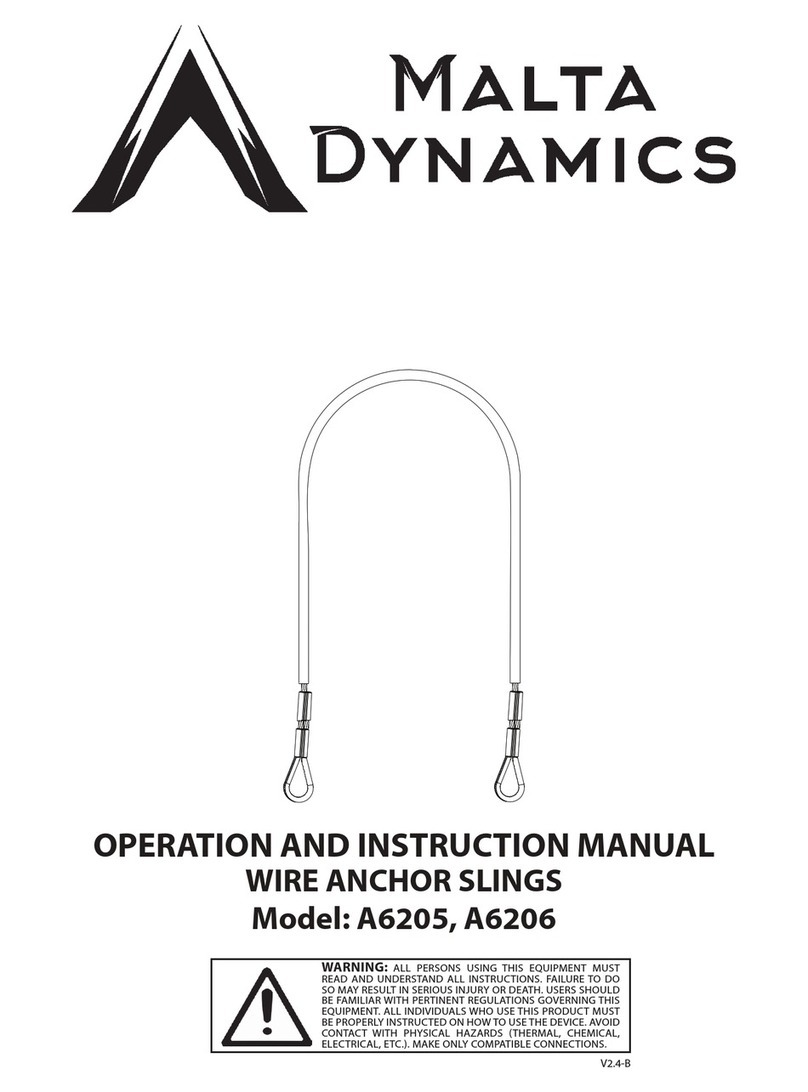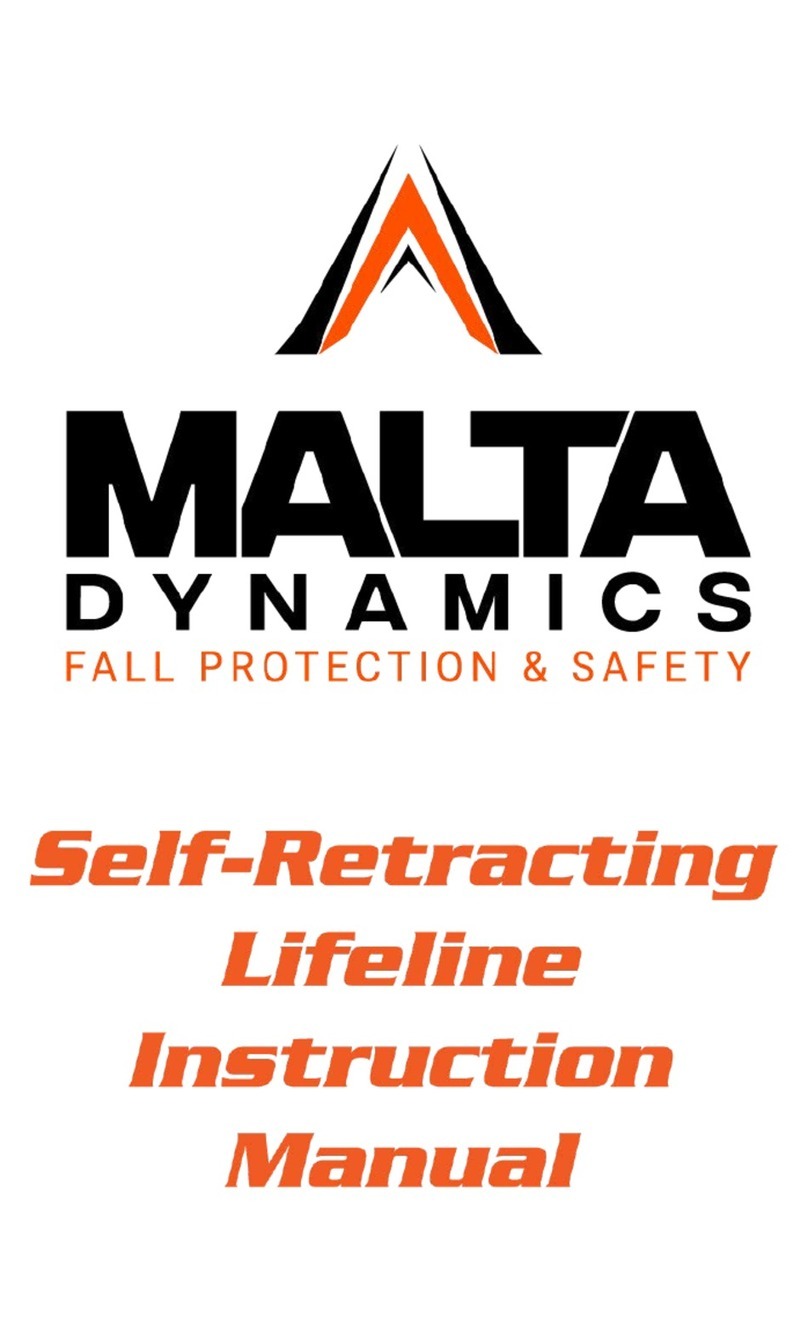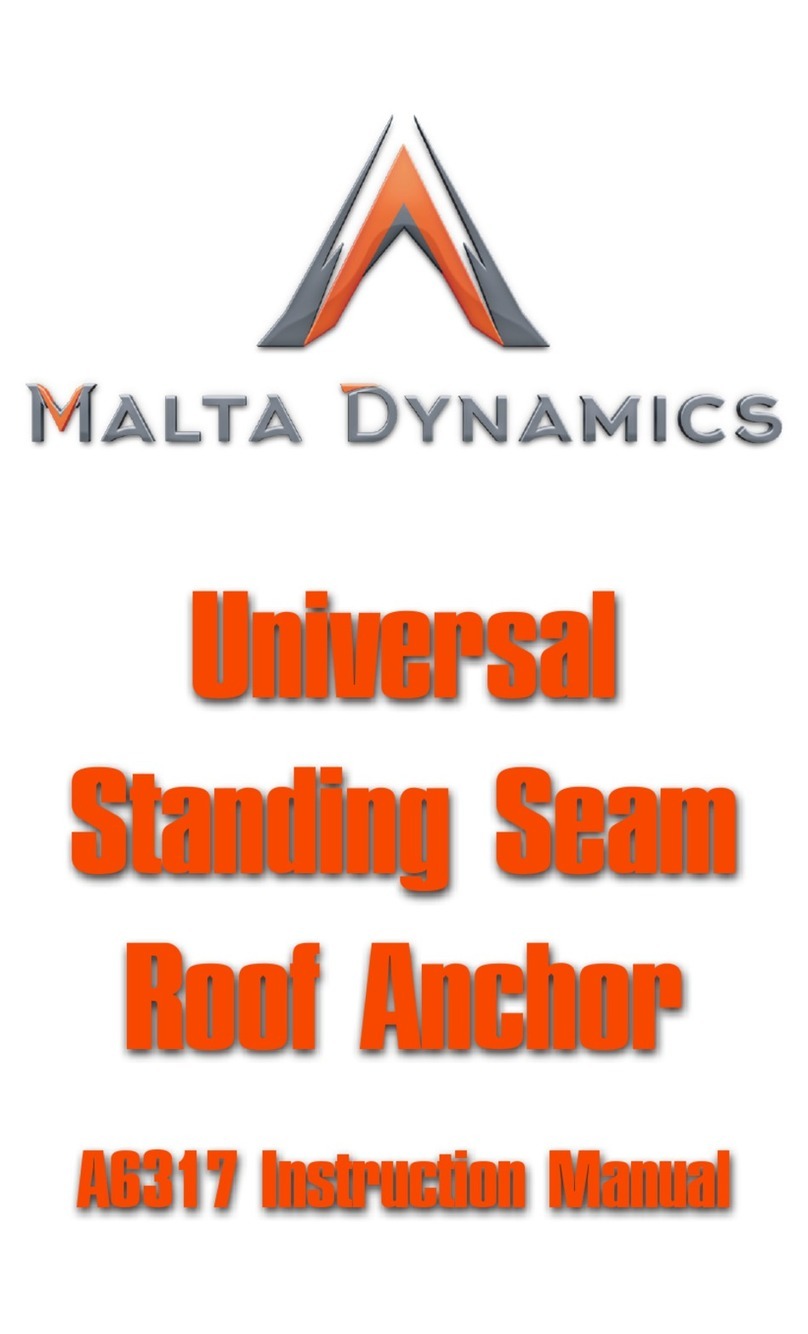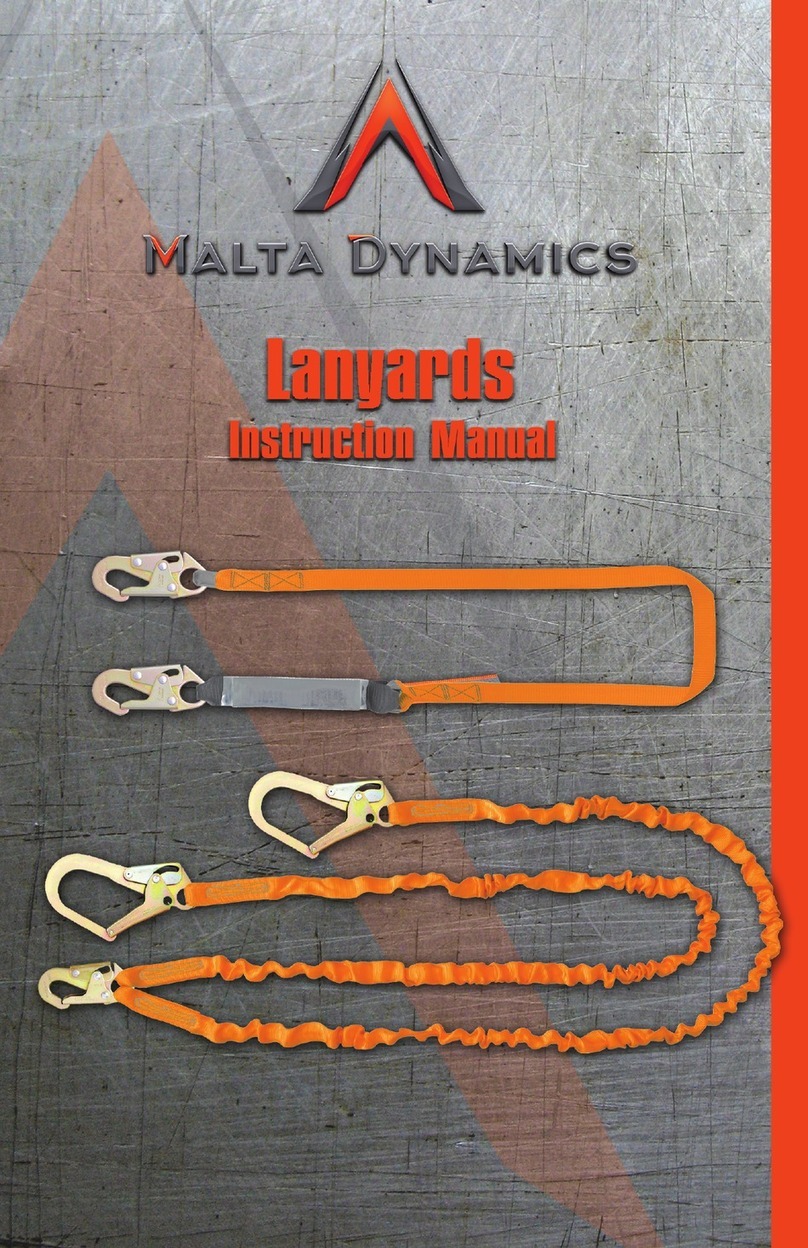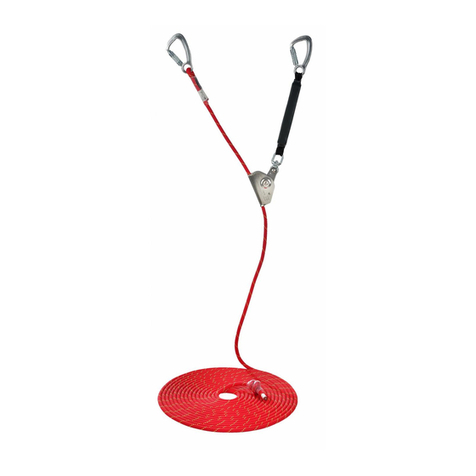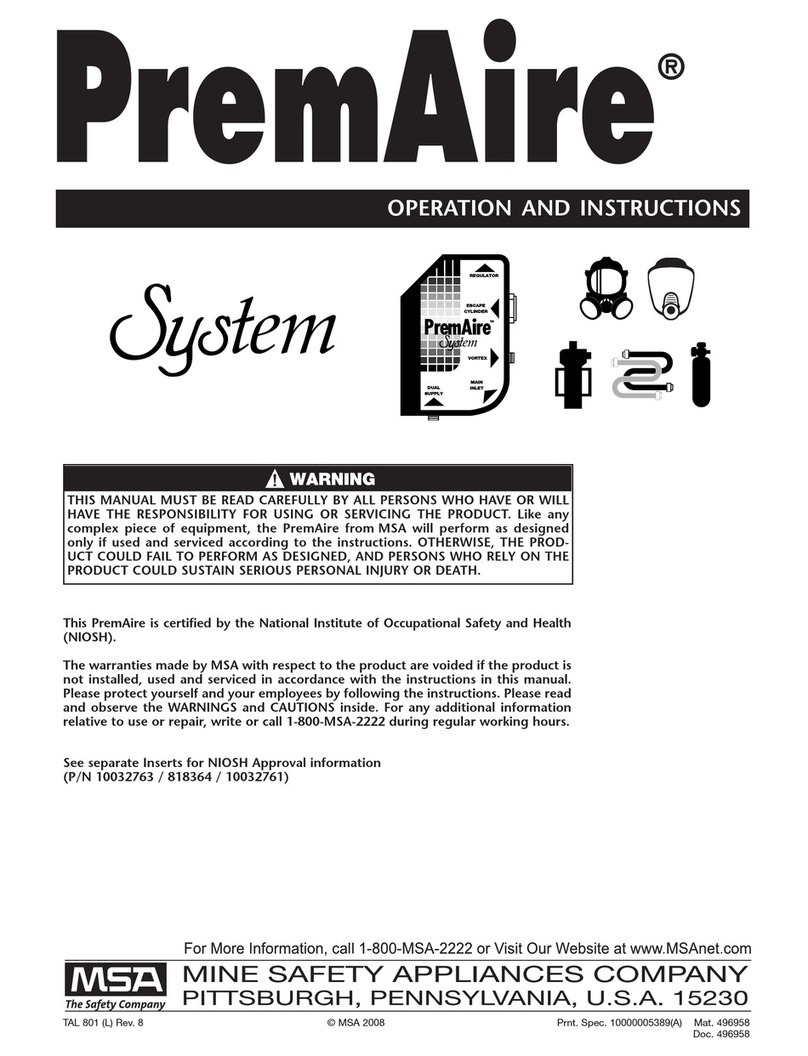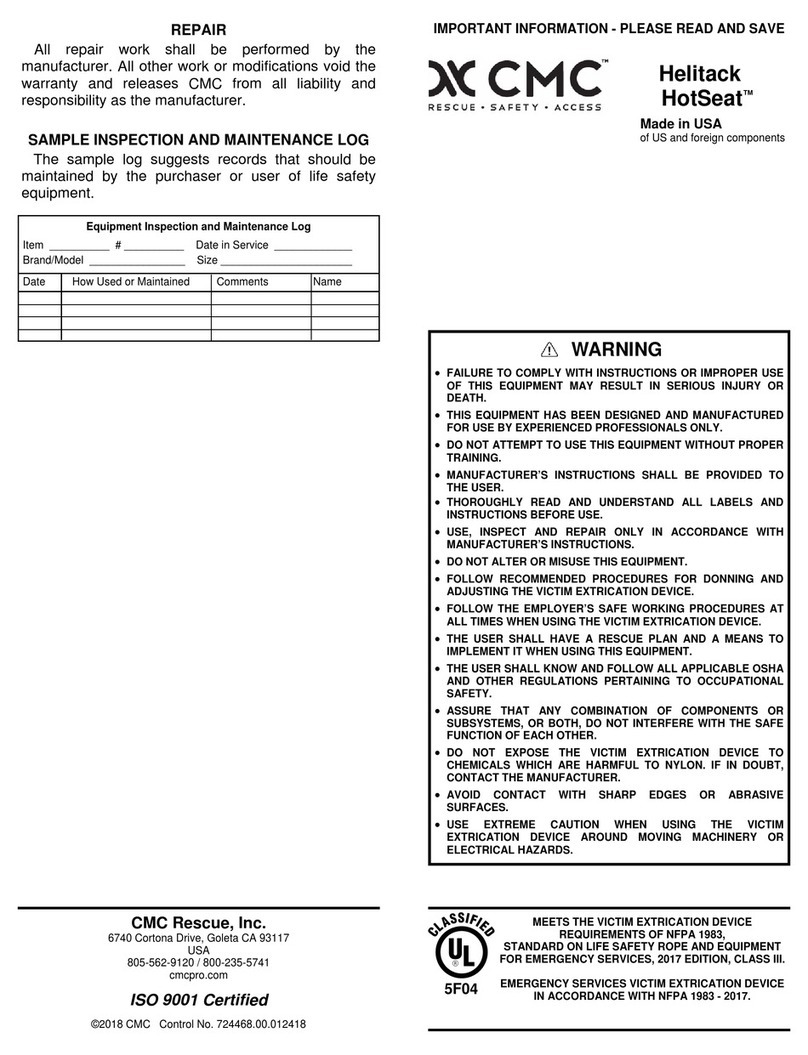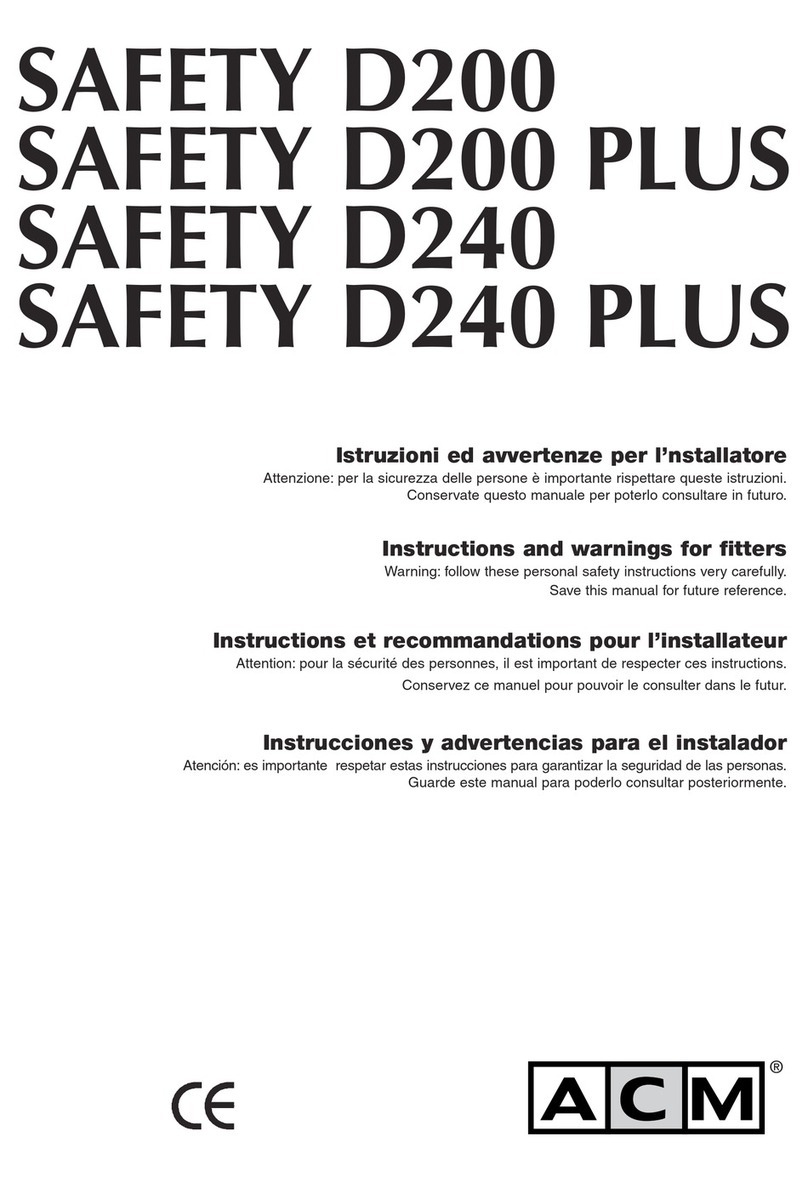
Before Fall After Fall Anchorage Allowance
Static line
deflection
length
of Lanyard
Energy
Absorber
Extension
Height of worker
Safety Clearance
Refer
Deflection Chart
Fig. 10
6.56 ft.
3.28 ft.
1.90 ft.
3.28 ft.
Table
Span Length Users 1 2 34
3.87 4.30 3.87 3.87
4.33 4.82 4.36 4.36
5.28 5.91 5.31 5.31
5.74 6.43 5.81 5.81
6.69 7.51 6.76 6.76
7.15 8.04 7.25 7.25
8.07 9.09 8.20 8.20
8.56 9.65 8.69 8.69
9.48 10.70 9.65 9.65
9.94 11.22 10.14 10.14
10.89 12.30 11.12 11.12
11.35 12.83 11.58 11.58
12.30 13.95 12.56 12.56
12.76 14.44 13.02 13.02
13.68 15.49 14.01 14.01
14.14 16.01 14.50 14.50
15.06 17.06 15.49 15.49
15.52 17.59 15.98 15.98
Deflection Chart
15 ft.
20 ft.
25 ft.
30 ft.
35 ft.
40 ft.
45 ft.
50 ft.
55 ft.
60 ft.
65 ft.
70 ft.
75 ft.
80 ft.
85 ft.
90 ft.
95 ft.
100 ft.
Step 8 : Now lifeline may be taken off from the anchorage.
Step 9 : After uninstallation, inspect the entire lifeline for any evidence of damage, wear, corrosion on
tensioner body and separation of rope fibers.
Do not alter& misuse the equipment.
NOTE:-
Workplace conditions, including, but not limited to, flame, corrosive chemicals, electrical shock, sharp objects, machinery, abrasive
substances, weather conditions, and uneven surfaces, must be assessed by a Competent Person before fall protection equipment is selected.
The analysis of the workplace must anticipate where workers will be performing their duties, the routes they will take to reach their work, and the
potential and existing fall hazards they may be exposed to. Fall protection equipment must be chosen by a Competent Person. Selections must
account for all potential hazardous workplace conditions. All fall protection equipment should be purchased new and in an unused condition.
Fall protection systems must be selected and installed under the supervision of a Competent Person, and used in a compliant manner.
Fall protection systems must be designed in a manner compliant with all federal, state, and safety regulations.
Forces applied to anchors must be calculated by a Competent Person.
Harnesses and connectors selected must be compliant with manufacturer's instructions, and must be of compatible size and configuration.
A pre-planned rescue procedure in the case of a fall is required. The rescue plan must be project specific. The rescue plan must allow for
employees to rescue themselves, or provide an alternative means for their prompt rescue.
Store rescue equipment in an easily accessible and clearly marked area.
Training of Authorized Persons to correctly erect, disassemble, inspect, maintain, store, and use equipment must be provided by a Competent
Person.
Training must include the ability to recognize fall hazards, minimize the likelihood of
fall hazards, and the correct use of personal fall arrest systems.
NEVER use fall protection equipment of any kind to hang, lift, support, or hoist tools
or equipment, unless explicitly certified for such use.
Maintenance of equipment must be done according to manufacturer's instructions.
Equipment instructions must be retained for reference.
Prior to EACH use, all equipment in a fall protection system must be inspected for any
potential or existing deficiencies that may result in its failure or reduced functionality.
IMMEDIATELY remove equipment from service if any deficiencies are found.
Equipment must be inspected by a Competent Person at least every 12 months.
These inspections must be documented in equipment instruction manual and on
equipment inspection grid label.
Equipment must be inspected for defects, including, but not limited to, the absence
of required labels or
markings, improper form/fit/function, evidence of cracks, sharp edges, deformation,
corrosion, excessive heating, alteration, excessive wear, fraying, knotting, abrasion,
and absence of parts.
Equipment that fails inspection in any way must immediately be removed from use,
or repaired by an entity approved by the manufacturer.
No on-site repair of equipment unless explicitly permitted by the manufacturer.
Equipment subjected to forces of fall arrest must immediately be removed from use.
Snap hooks, carabiners, and other connectors must be selected and applied in a
compatible fashion. All risk of disengagement must be eliminated. All snap
hooks and carabiners must be self-locking and self-closing, and must never be
connected to each other.
Age, fitness, and health conditions can seriously affect the worker should a fall
occur. Consult a doctor if there is any reason to doubt a user's ability to withstand
and safely absorb fall arrest forces or perform set-up of equipment.
Pregnant women and minors must not use this equipment. Physical harm may
still occur even if fall safety equipment functions correctly. Sustained post-fall
suspension may result in serious injury or death. Use trauma relief straps to
reduce the effects of suspension trauma. Allowable individual worker weight
limit (including all equipment), unless explicitly stated otherwise, is 130 lbs -
310 lbs.
IMPORTANT INFORMATION :
The Horizontal Anchor Line and the anchor points need to be above the user's
head, Horizontal anchor line is intended for use on span upto 100 ft, for a fall of
up to 4 users, with anchor line fitted on spans of 15 ft to 100 ft, the typical peak
line deflection from the original position are stated in table above.
MAINTENANCE, CLEANING, AND STORAGE
Repairs to 4-Person Rope HLL can only be made by a competent person or
an entity authorized by manufacturer. If a 4-Person Rope HLL fails inspection in
any way, immediately remove it from service, and contact manufacturer to
inquire about its return or repair.
Cleaning after use is important for maintaining the safety and longevity of 4-
Person Rope HLL.
WARNING- Failure to understand and comply with safety regulations may result in serious injury or
death. Regulations included herein are not all-inclusive, are for reference only, and are not intended
to replace a Competent Person's judgment or knowledge of federal or state standards.
Note:-
HLL3001 is proved with steel O-Rings to be used as mobile anchor for the workers to get connected
to the lifeline permanently.
Fig 09 Indicator
Plate
Page 2 of 4
HLL3001
